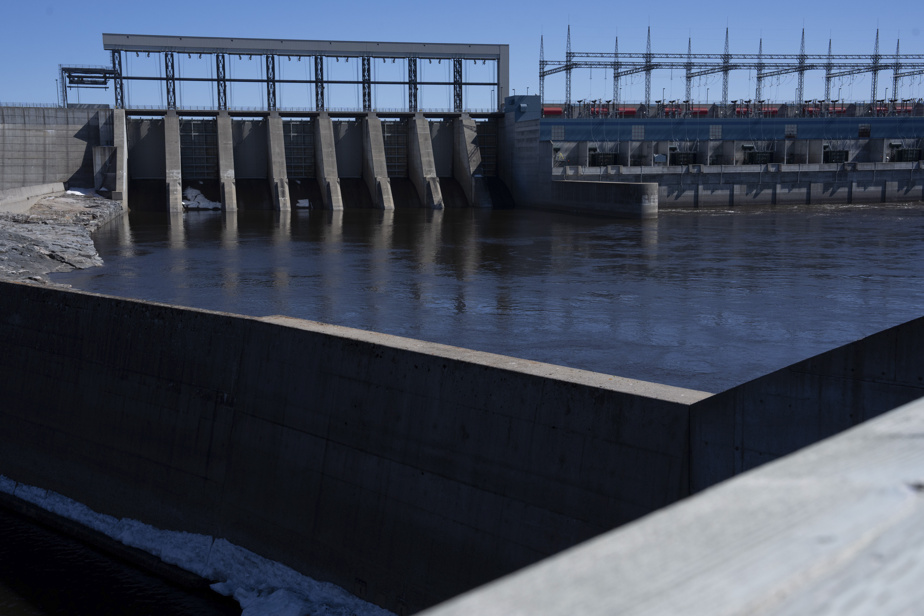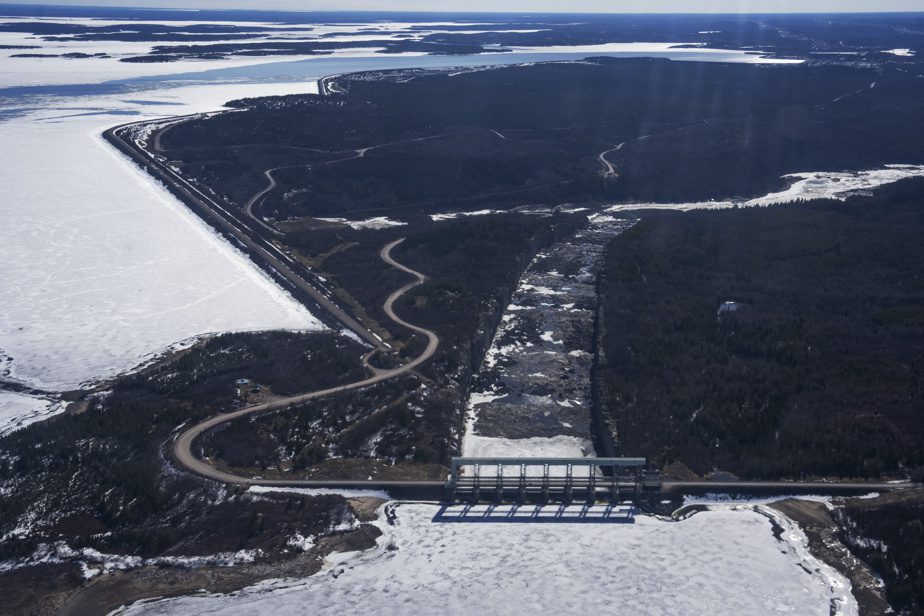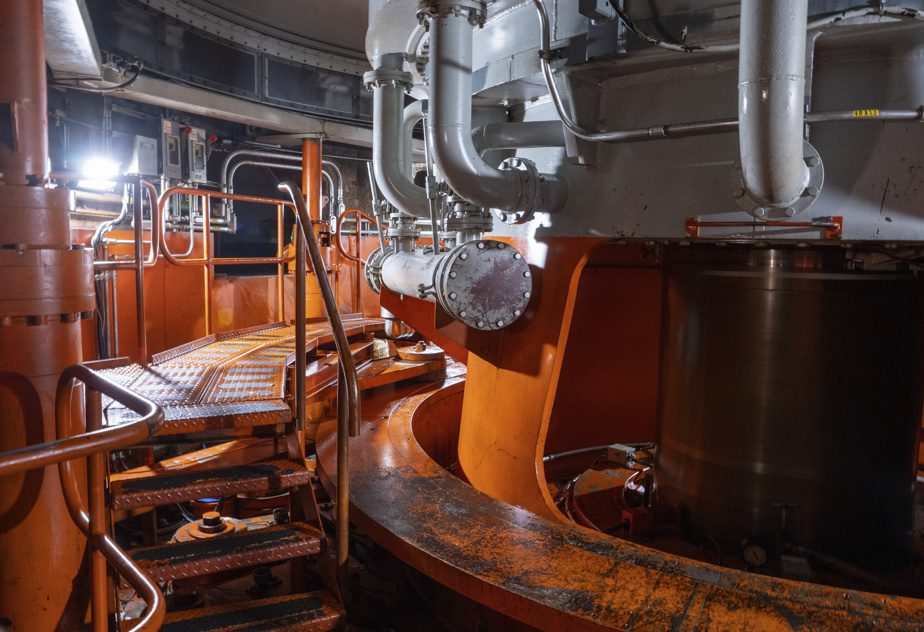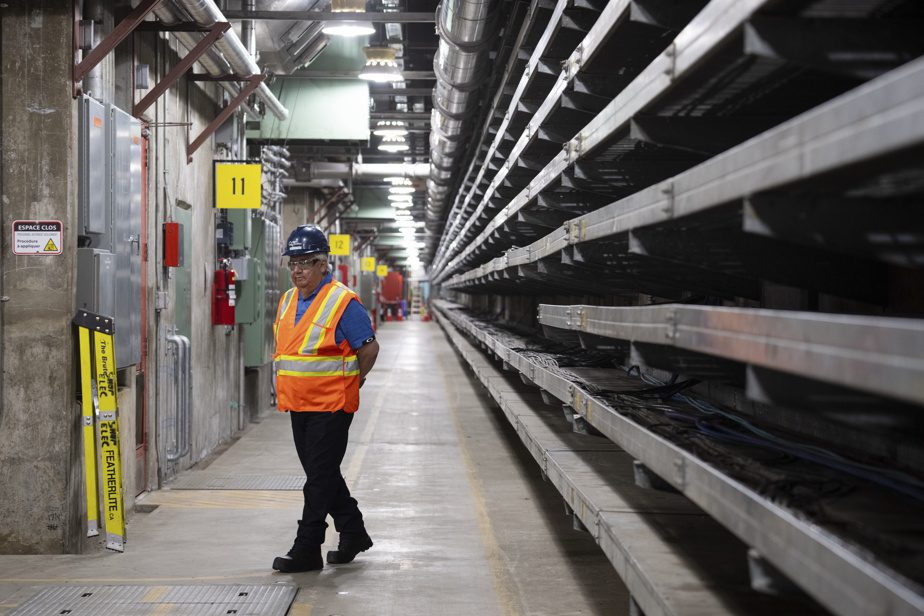
(Radisson, Quebec) In February, the United States did something it hadn't done in a long time: It exported more electricity to Canada than it imported. Then, in March, US electricity exports to Canada rose again, to levels not seen since at least 2010.
The rise in electricity flows to North America is a concern for North America: Energy demand is rising everywhere, but the ability to generate electricity – in Canada, from massive hydroelectric dams – and route demand is being put to the test.
These hydropower plants have recently been forced to reduce their production due to low rain and snow; Many experts say that the situation is temporary. But some worry: Climate change, which could be attributed to the 2023 forest fires, will reduce the reliability of forecast models of rainfall and snowfall.
“You have to be humble in the face of extreme weather,” says Chris O'Reilly, CEO of BC Hydro, which operates British Columbia's hydroelectric dams. “Some years there is more water, others less. During lows, like right now, importing is normal and we expect the same to happen this year. »
The United States and Canada have long been interdependent: Canadian demand for electricity peaks in the winter, for heating; The American peak occurs in summer with air conditioning.
Canada's abundant hydropower is key to this trade, providing affordable renewable energy to California, Oregon, Washington, New York and New England.
But this balance is threatened. In many states, energy demand rises sharply in both summer and winter. According to some experts, US winter demand will exceed summer demand by 2050.

Photo by Ruth Fremson, The New York Times
The James Bay complex made Hydro-Québec one of the main suppliers to New York State and New England. But a less snowy winter forced Hydro-Quebec and other Canadian utilities to import more American electricity.
At the same time, grids rely heavily on intermittent energy sources such as sun and wind. Large hydroelectric plants in California – especially the Hoover Dam – and Canada must now deal with falling water levels.
“We're facing real climate change, and its impact on hydropower generation is unfolding in real time, virtually across North America,” said Robert McCullough of McCullough Research in Portland, which has advised companies' corporate clients since the 1980s.
Power transformation
In addition, individuals and businesses are adopting heat pumps as well as electric cars and industrial equipment, moving away from fossil fuels. This will increase power demand, as will the expansion of data centers.
The Biden administration and some states are working to build new US power lines. But experts suggest the United States should also add lines to Canada. So California's solar farms can supply Canada when water is scarce, and Canada can send more electricity south when water levels are high.

Photo by Ruth Fremson, The New York Times
The Robert-Bourassa power station, built by Hydro-Québec on the Grande Riviere, is not far from the village of Radisson.
Shelley Welton, a professor at the University of Pennsylvania who co-signed a recent report on the reliability of electricity grids, said, “Many models show that a more interconnected grid is a better grid. “In my opinion, interconnection at the North American level is an asset. You need to plan for different scenarios and plan for the long term. »
Surrounded by pine and spruce trees in northern Quebec, the Robert-Bourassa hydroelectric station holds the promises and challenges of renewable energy production.
This power plant and its smaller sister La Grande-2-A, built by Hydro-Québec in Grande Rivière, can produce more electricity than the Grand Coulee Dam on the Columbia River, the largest power plant in the United States in Washington state.

Photo by Ruth Fremson, The New York Times
One of the tunnels is the Robert-Bourassa Power Station, formerly known as LG-2
This James Bay complex allowed Hydro-Québec to become one of the main suppliers of New York State and New England. However, lower-than-usual snow has forced Hydro-Québec and other Canadian utilities to import more US electricity in recent months.
“Conditions appear to be unusually dry,” said Gilbert Bennett, president of Water Power Canada, a non-profit organization that represents the hydropower sector. “Annual variations are increasing. »
Hydro-Québec predicts that there were similar periods in 2004 and 2014, and that the current drought is coming to an end: its models predict a 6 to 8% increase in rainfall in eastern Canada over the next 25 years.
According to Serge Abergel, chief operating officer of American subsidiary Hydro-Québec Energy Services, Canada's recent use of American electricity has made it possible to save water at hydroelectric plants. Modernizing and optimizing networks and adding renewable resources will allow the two countries to complement each other, he added.
“Transformation also creates opportunities, we optimize these resources,” said Mr. Abergel emphasized.
In general, the United States prefers to import more electricity from Canada. It is very cheap. Hydro-Quebec residential customers pay about $69 per 1,000 kWh of energy, compared with $325 in New York state and an average of $380 in New England, Mr. Abergel said.
Hydro-Québec's costs are low: its power stations were built and paid for long ago. Canadian hydropower costs people in Massachusetts twice as much as residents of Quebec, according to a McCullough Research analysis.
Hydro-Québec is building new power lines. It will participate in the Champlain Hudson Power Express, which is expected to be completed by mid-2026. This US$6 billion transmission line, approximately 550 km long, connects a substation in La Prairie to a converter station in the Astoria district of New York. The line is powerful enough to power more than a million New York homes.
“If we want a faster transition, we need more transit,” Mr. Abergel said. But “we don't encourage anyone to find solutions, we do things piecemeal”.
Mr. According to Abergel, Hydro-Quebec will meet all of its obligations to New York and other states despite the drought because it can conserve water by reducing the amount of electricity produced by its power plants and by importing more of the United States' power. This ensures the company always has enough water to export power during peak demand in New York and New England.
But some energy experts are less optimistic. Mr McCullough said global warming could seriously damage reservoirs and it would no longer be possible to store enough water to deal with prolonged droughts.
“Every episode like this scares us,” he said.
This article was originally published The New York Times.
Read this text in its original version (in English; subscription required).




